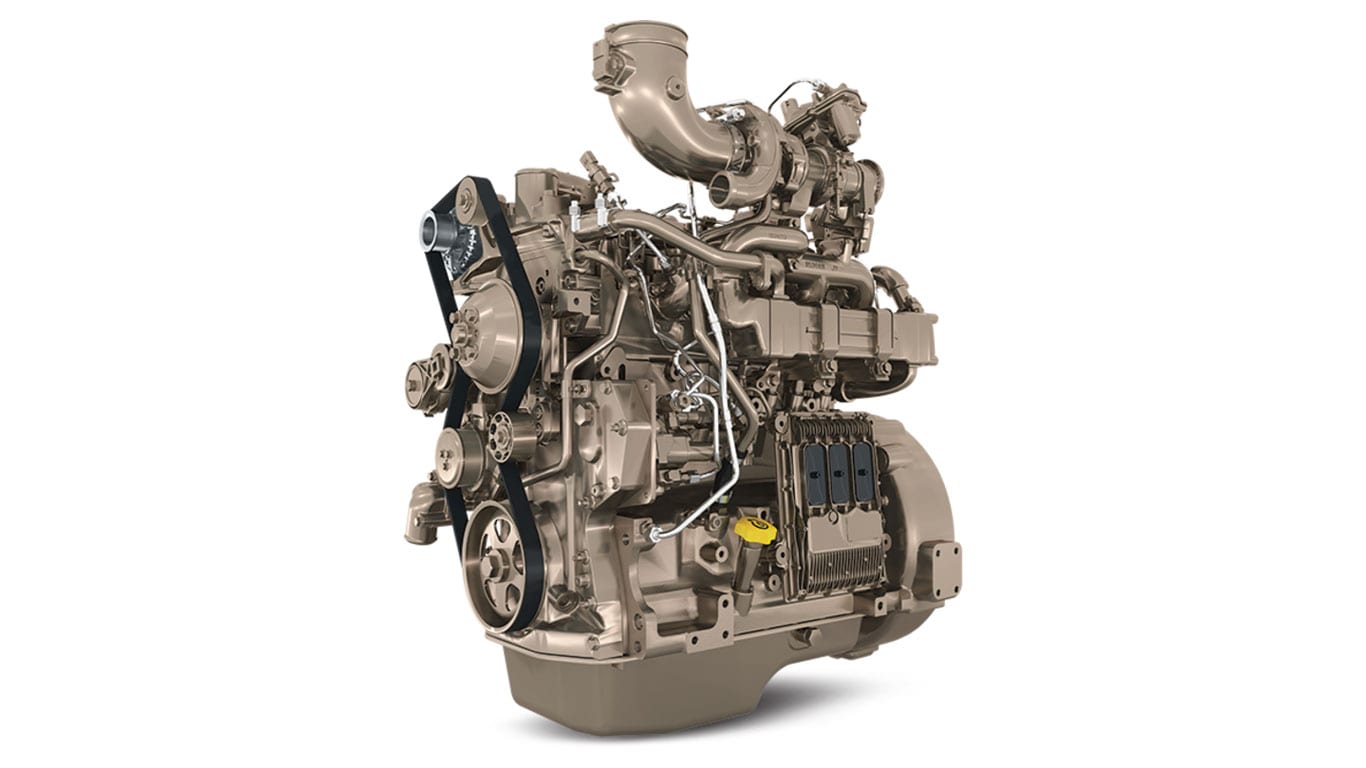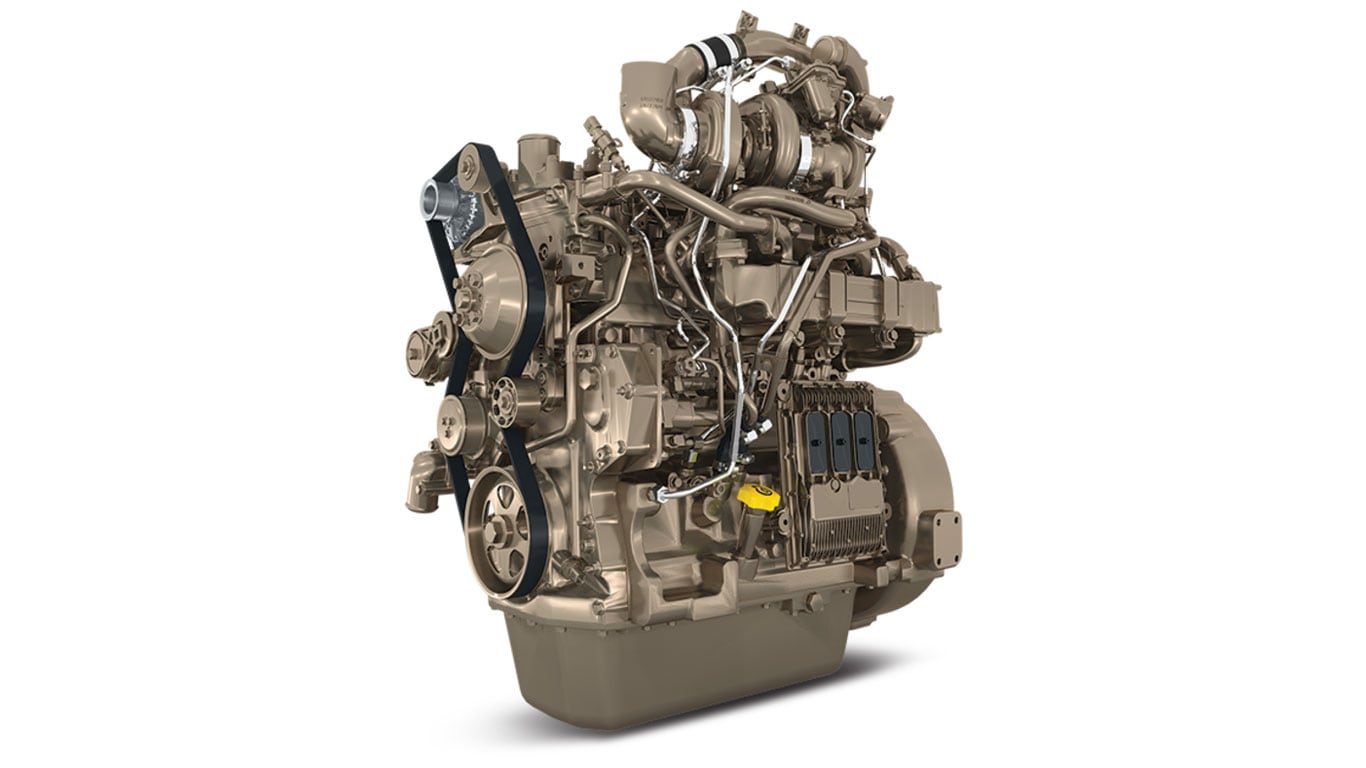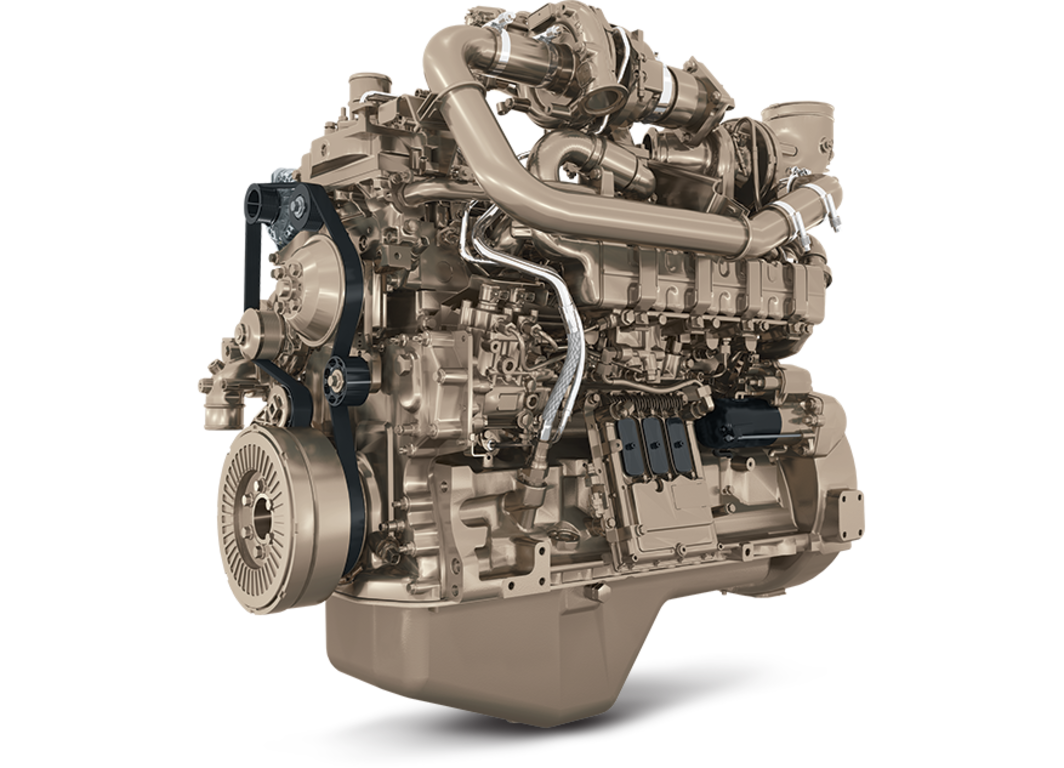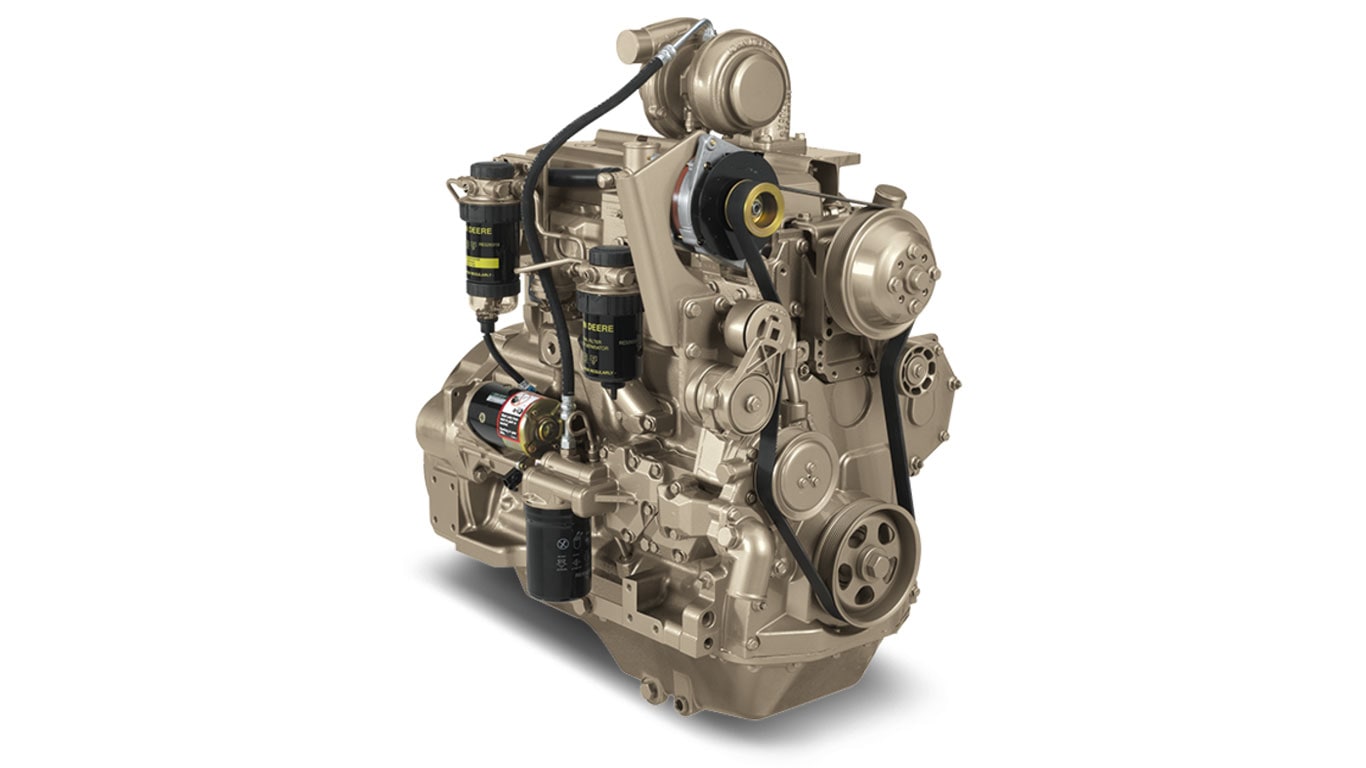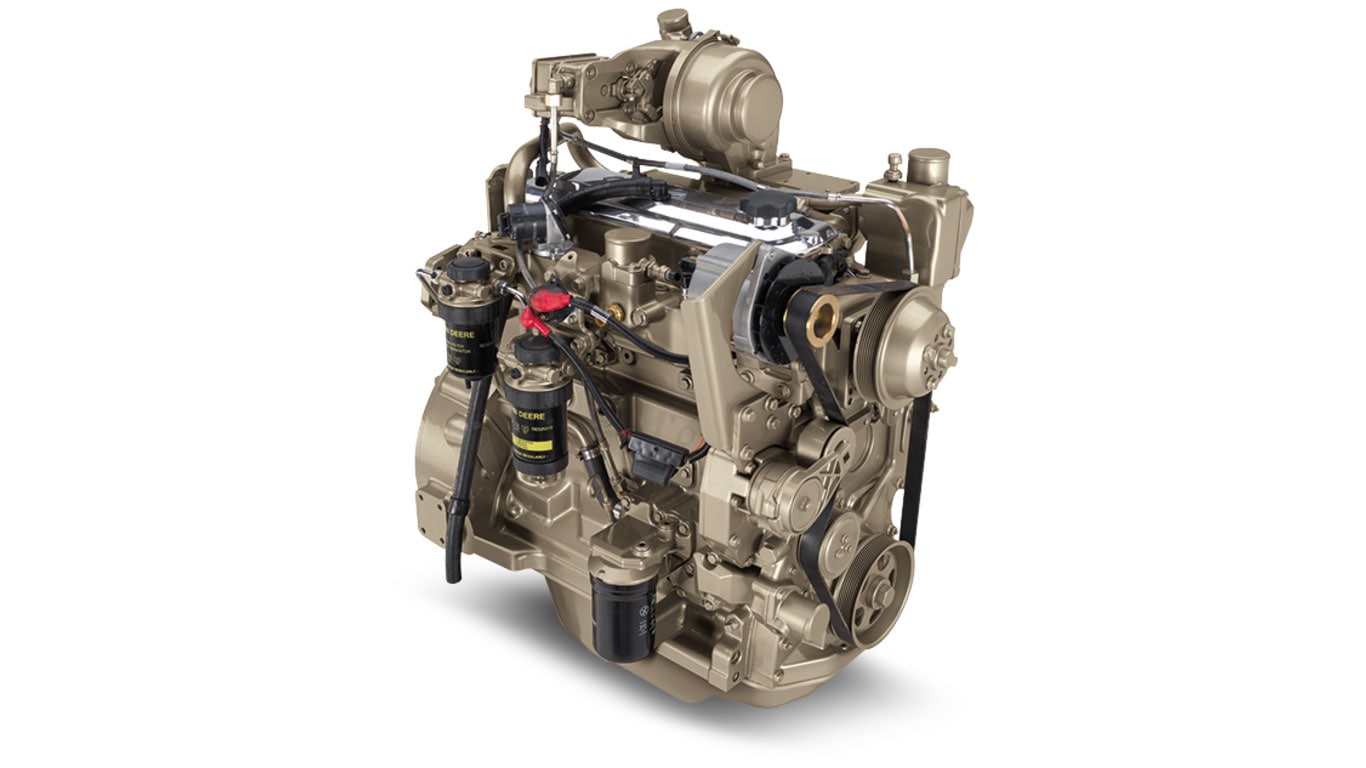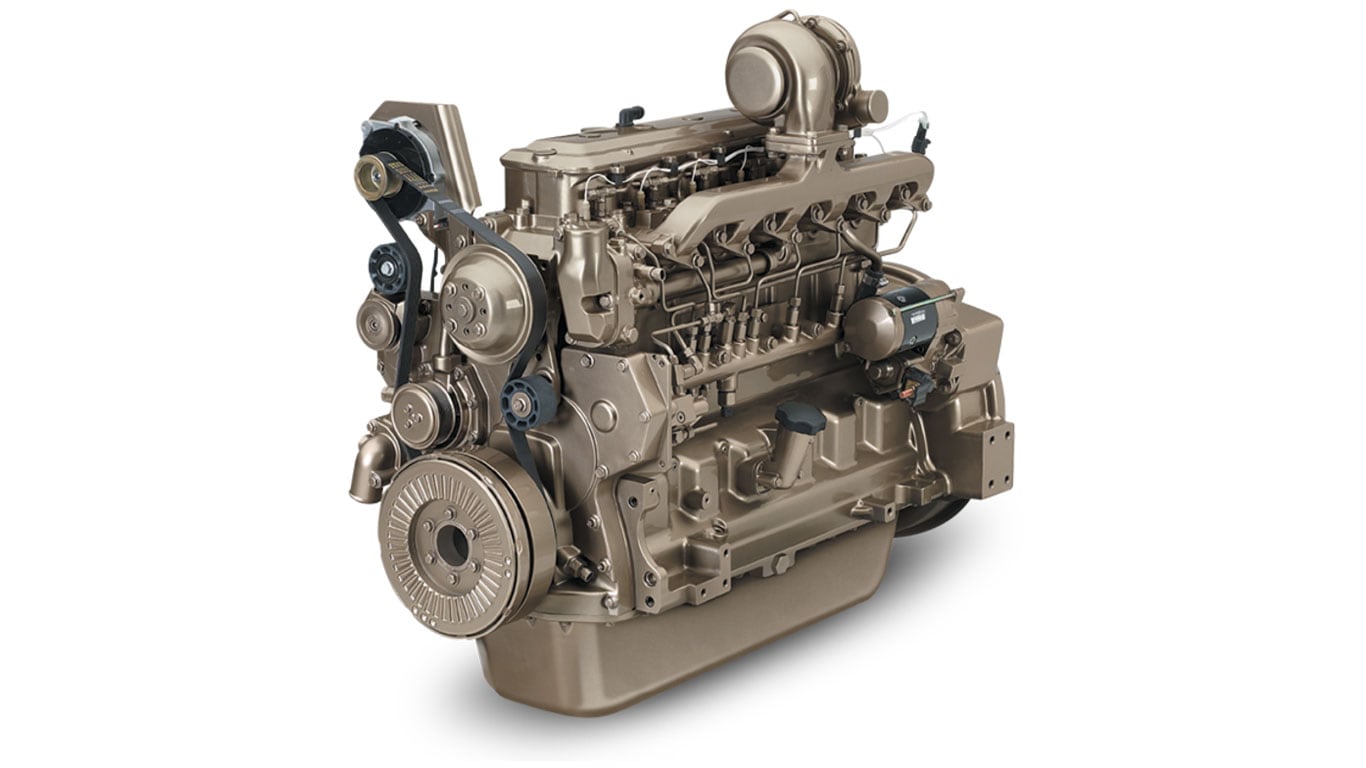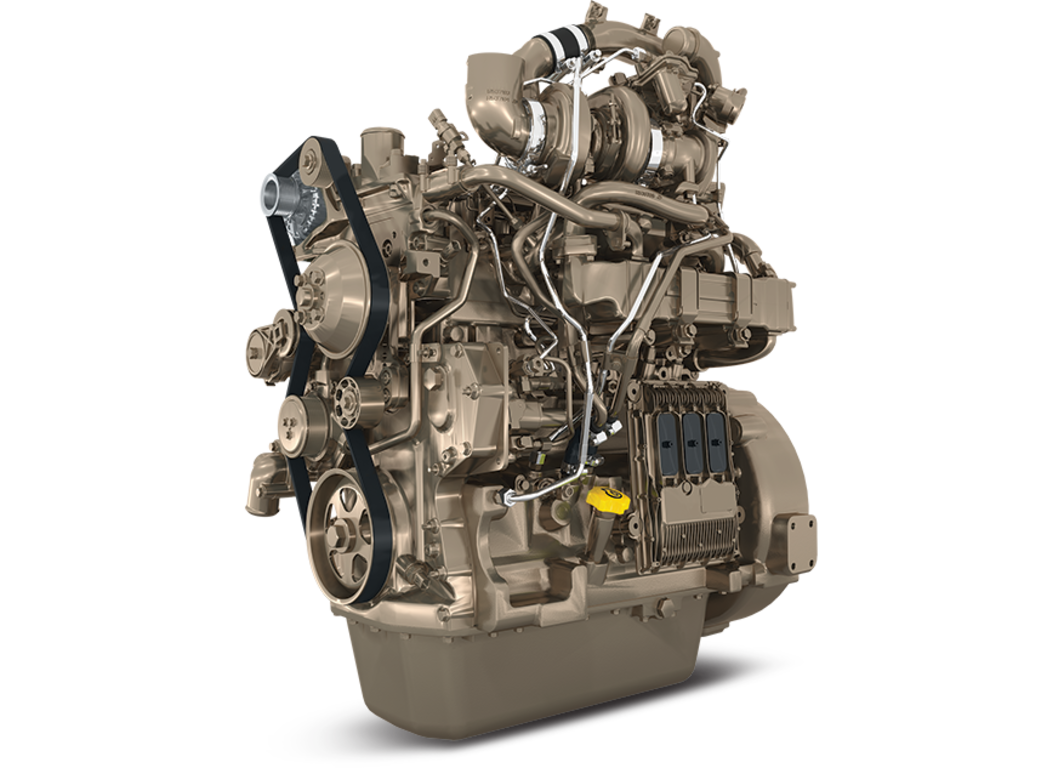Online Brochures
Overview
- PowerTech™ PSS
- 93-129 kW (125-173 hp)
Features
Features
Features
Expand All
Collapse All
Ready to run. Stage V.
- John Deere is ready to work, ready to generate, and ready to run with engines meeting EU Stage V emissions regulations. This means OEM customers currently using a John Deere engine with a diesel particulate filter (DPF) won’t have to re-engineer their machines to meet the requirements of Stage V regulations. John Deere has been using DPF technology since Interim Tier 4/Stage III B and is well positioned to help customers transition to the EU’s Stage V standard. We have extensive experience with the development and integration of DPFs in both John Deere and OEM equipment, with more than 425 million DPF hours in the field.*
* Data compiled September 2016
Series turbocharger
- Fresh air is first drawn into the low-pressure turbocharger (fixed geometry) and compressed to a higher pressure. The compressed air is then drawn into the high-pressure turbocharger (WGT), where the air is further compressed. The high-pressure air is then routed through a charge air cooler and into the engine’s intake manifold. By splitting the work between two turbochargers, both can operate at peak efficiency and at slower rotating speeds — lowering stress on turbocharger components and improving reliability. Series turbocharging delivers more boost pressure than single turbocharger configurations, which results in higher power density, improved low-speed torque, and improved high-altitude operation.
Cooled exhaust gas recirculation (EGR)
- EGR cools and mixes measured amounts of cooled exhaust gas with incoming fresh air to lower peak combustion temperatures, thereby reducing Nox.
Exhaust filters
- These engines utilize a catalyzed exhaust filter that contains a diesel oxidation catalyst (DOC) and a diesel particulate filter (DPF). The DOC reacts with exhaust gases to reduce carbon monoxide, hydrocarbons, and some particulate matter (PM). The downstream DPF traps and holds the remaining PM. Trapped particles are oxidized within the DPF through a continuous cleaning process called passive regeneration. Passive regeneration occurs during normal operating conditions when heat from the exhaust stream and catalysts within the exhaust filter trigger the oxidation of the trapped PM. If passive regeneration cannot be achieved due to low temperature, load, or speed, then PM is removed using active regeneration — an automatic cleaning process controlled by the exhaust temperature management system.
Selective catalytic reduction (SCR)
- John Deere engines feature an SCR system that utilizes a urea-based additive, sometimes referred to as diesel exhaust fluid (DEF). The ammonia in the urea mixes with engine exhaust gases in the SCR catalyst to reduce NOx — converting it to nitrogen and water vapor.
High-pressure common-rail (HPCR) and engine control unit (ECU)
- The HPCR fuel system provides variable common-rail pressure, multiple injections, and higher injection pressures up to 2,500 bar (36,000 psi). It also controls fuel injection timing and provides precise control for the start, duration, and end of injection.
4-valve cylinder head
- The 4-valve cylinder head provides excellent airflow resulting in greater low-speed torque and better transient response time by utilizing a cross-flow design.
Air-to-air aftercooled
- This is the most efficient method of cooling intake air to help reduce engine emissions while maintaining low-speed torque, transient response time, and peak torque. It enables an engine to meet emissions regulations with better fuel economy and the lowest installed costs.
Compact size
- Lower installed cost
- Mounting points are the same as previous models
Engine performance
- Multiple rated speeds to further reduce noise and improve fuel economy
- Peak torque equal to or better than Interim Tier 4/Stage III B
- Transient response time equal to Interim Tier 4/Stage III B
- Low-speed torque similar to Interim Tier 4/Stage III B
- Optional power bulge equal to or better than Interim Tier 4/Stage III B
John Deere electronic engine controls
- Faster engine control unit (ECU) manages both the engine and the aftertreatment system
- Four times the memory, twice the RAM and double the processing speed
- The input/output capability has increased 40%
- Premium software option integrates with equipment or vehicles to reduce engineering and installation costs
Additional features
- Glow plugs
- Gear-driven auxiliary drives
- 500-hour oil change
- Self-adjusting poly-vee fan drive
- Optional factory installed variable-speed fan drive improves fuel economy and reduces noise levels
- R.H. or L.H. engine-mounted fuel filters
- Low-pressure fuel system with electrical transfer pump and "auto-prime" feature
- *Available on all PowerTech PSS engines unless noted
Share:

